See photos of the US Navy's rare blue nose tradition, which may also be its strangest
The Royal Order of the Blue Nose is a naval tradition given to sailors who cross the Arctic Circle.
The tradition involves a series of tests and obstacles to gain a visit from the King of the North.
The Blue Nose Ceremony is one of the rarest of naval traditions.
The Royal Order of the Blue Nose is one of the most exclusive clubs among members of the US Navy.
The Order of the Blue Nose is a riff on the line-crossing ceremony many sailors experience when they cross the equatorial line.
What makes joining the Order of the Blue Nose harder is that sailors must be aboard a ship crossing the Arctic Circle at latitude 66°33' N — symbolizing that they entered the "realm" of Boreas Rex, King of the North.
Sailors who partake in the rare naval tradition must undergo a number of tasks in the frigid temperatures of the Arctic in order to earn the graces of the King and earn their blue nose.
An icy expedition
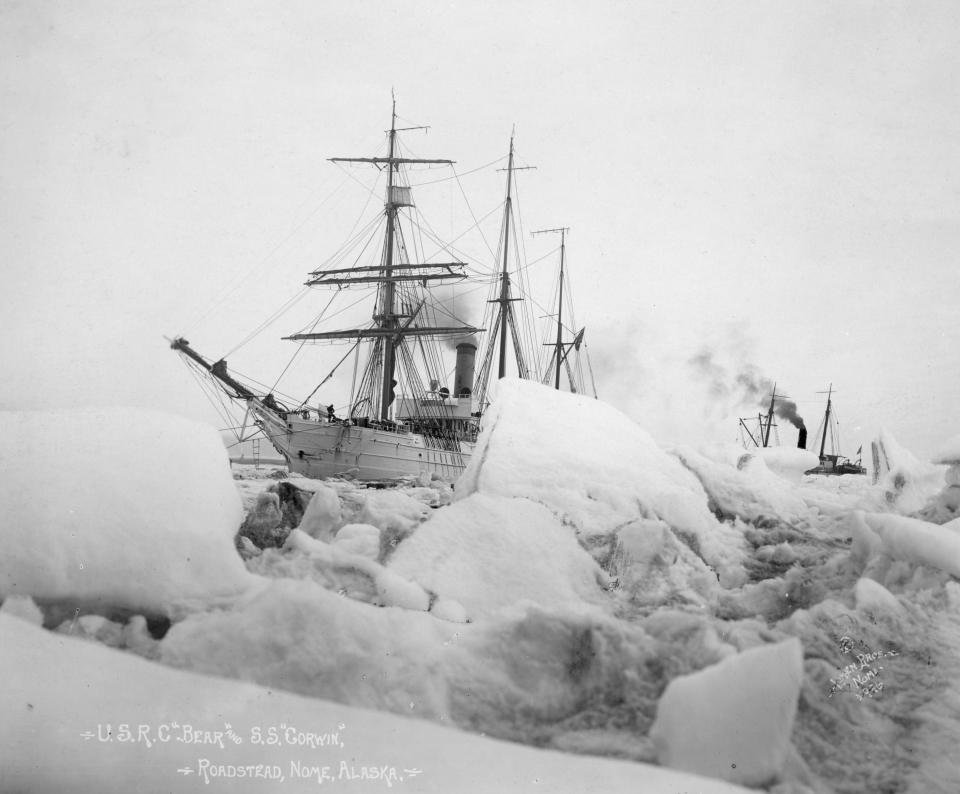
The Navy did not begin exploring the Arctic before 1836, but the tradition is believed to have become more formalized after World War II when the Navy started regularly exploring the region.
It wasn't until 1851 that a ship successfully crossed the Arctic Circle as part of what is now known as the First Grinnell Expedition.
Henry Grinnell, an American merchant from New York, funded the expedition as part of a mission to find the lost Franklin expedition, a team of Royal Navy sailors who had set out six years prior and never returned.
The First Grinnell Expedition marked the first time the US Navy successfully navigated the Arctic, crossed the Arctic Circle, and returned to the US.
With the knowledge gained about land masses, sailing techniques, and maritime paths in the Arctic, many expeditions north would follow.
A journey plagued with danger
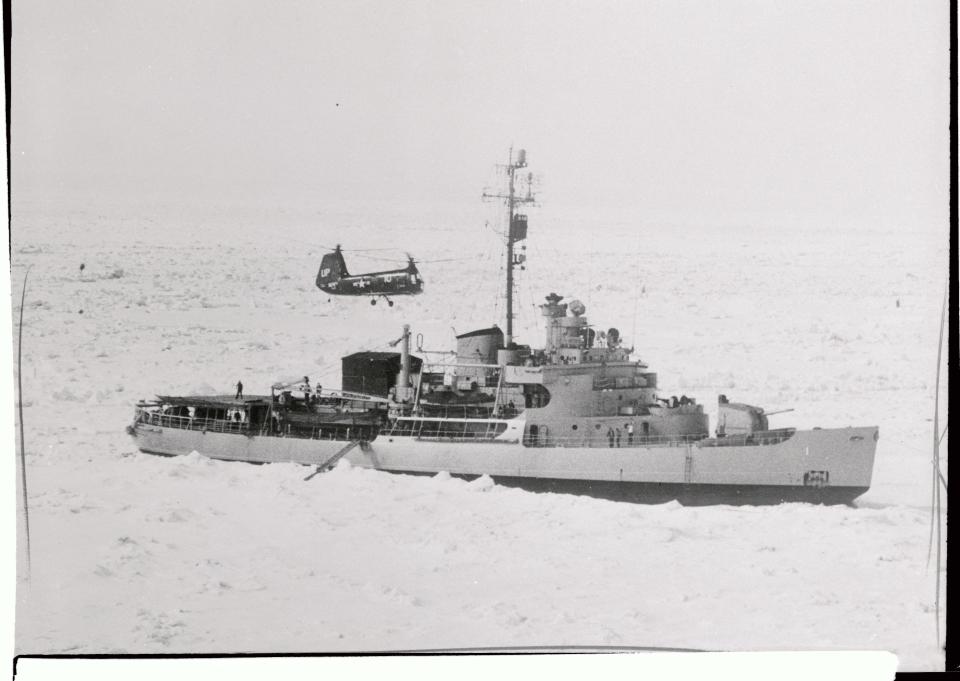
Despite a growing understanding of the area from repeat expeditions, it would be decades before the journey became less perilous. Many who explored the Arctic would not return after succumbing to the cold temperatures or damage sustained by ships from the ice.
For 17th-century ships, the ice pack could become so dense that sailors would get stuck for months at a time, having to wait until the summer months for the ice to thaw and melt to pass through successfully.
One of the most famous instances of the danger of the Arctic is the Jeannette, a ship that was stuck in ice for two years before it was eventually crushed by ice. Members aboard the Jeannette escaped the boat but eventually froze to death in the Arctic winter.
A well-earned achievement
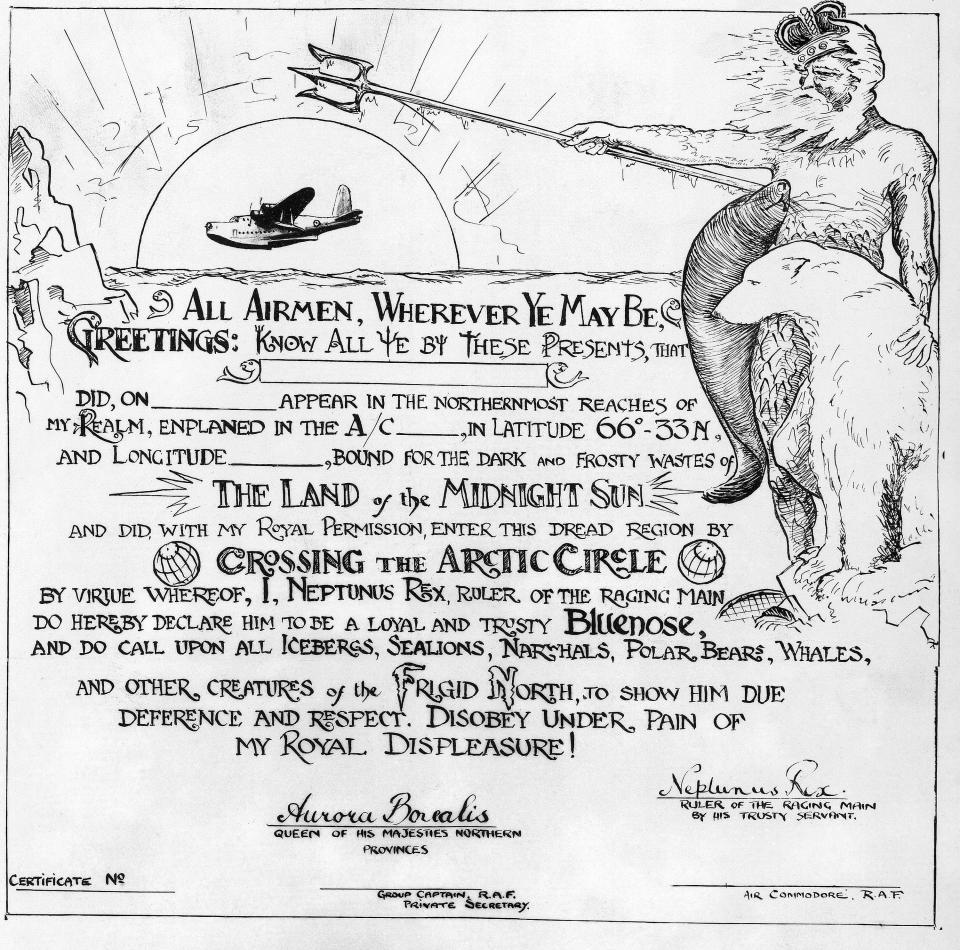
There are myriad unofficial honors granted to members of the US Navy by tradition. Plank owners, Shellbacks, and even Golden Dragons all require certain parameters to be met before the certificates can be handed out.
A number of requirements need to be met to join the Royal Order of the Blue Nose. But only recently have US Navy ships started returning to the Arctic Circle. The region has seen increased activity amid growing great power competition there. In late 2018, USS Harry Truman sailed to the Arctic Circle to participate in military exercises with other NATO forces — the first aircraft carrier to venture into the Arctic since the early 1990s.
And not all Navy vessels make their way to the Arctic. Ships stationed on the East Coast of the US are more likely to make their way to the Arctic compared to their West Coast counterparts. But even if a sailor is on the right ship and sailing out of the right port, they still may not actually make it to the Arctic Circle if the commanding officer deems it a waste of fuel or it doesn't make sense for the trip.
Morale booster
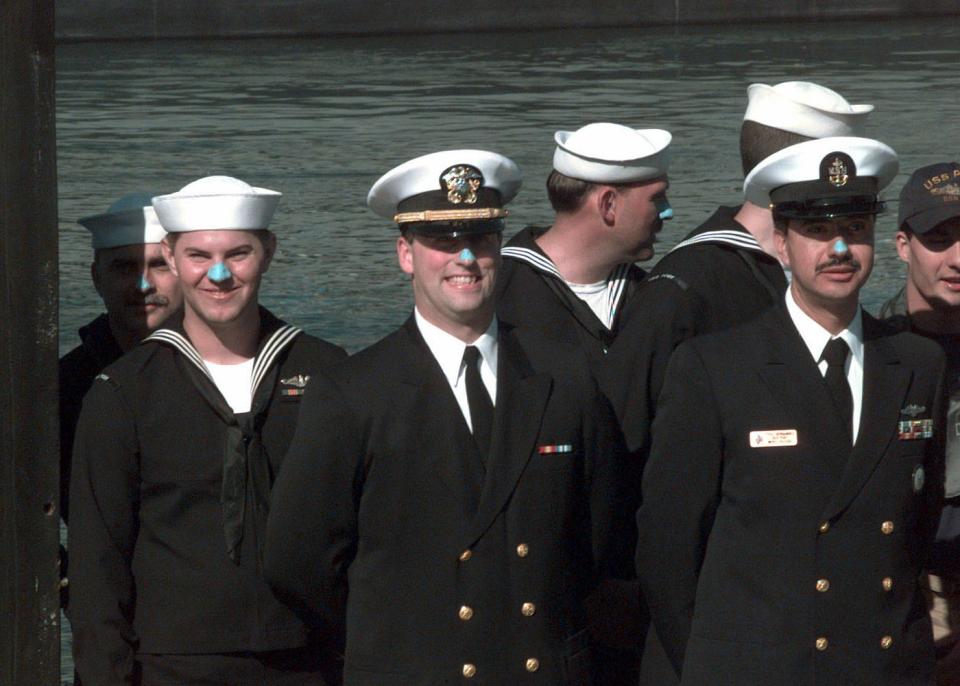
Going through various naval ceremonies serves as a morale booster for sailors, marking a significant moment in their career traversing the ocean.
As Secretary of the Navy John H. Dalton wrote in 1997, "these activities, if properly supervised, can be effective leadership tools to instill esprit de corps, unit cohesion, and respect for an accomplishment of another Sailor or Marine."
"'Crossing the line' ceremonies, and others, are only meant to celebrate and recognize the achievements of individual Sailors or Marines or those of entire units," Dalton continued.
Different ceremonies, same core principles
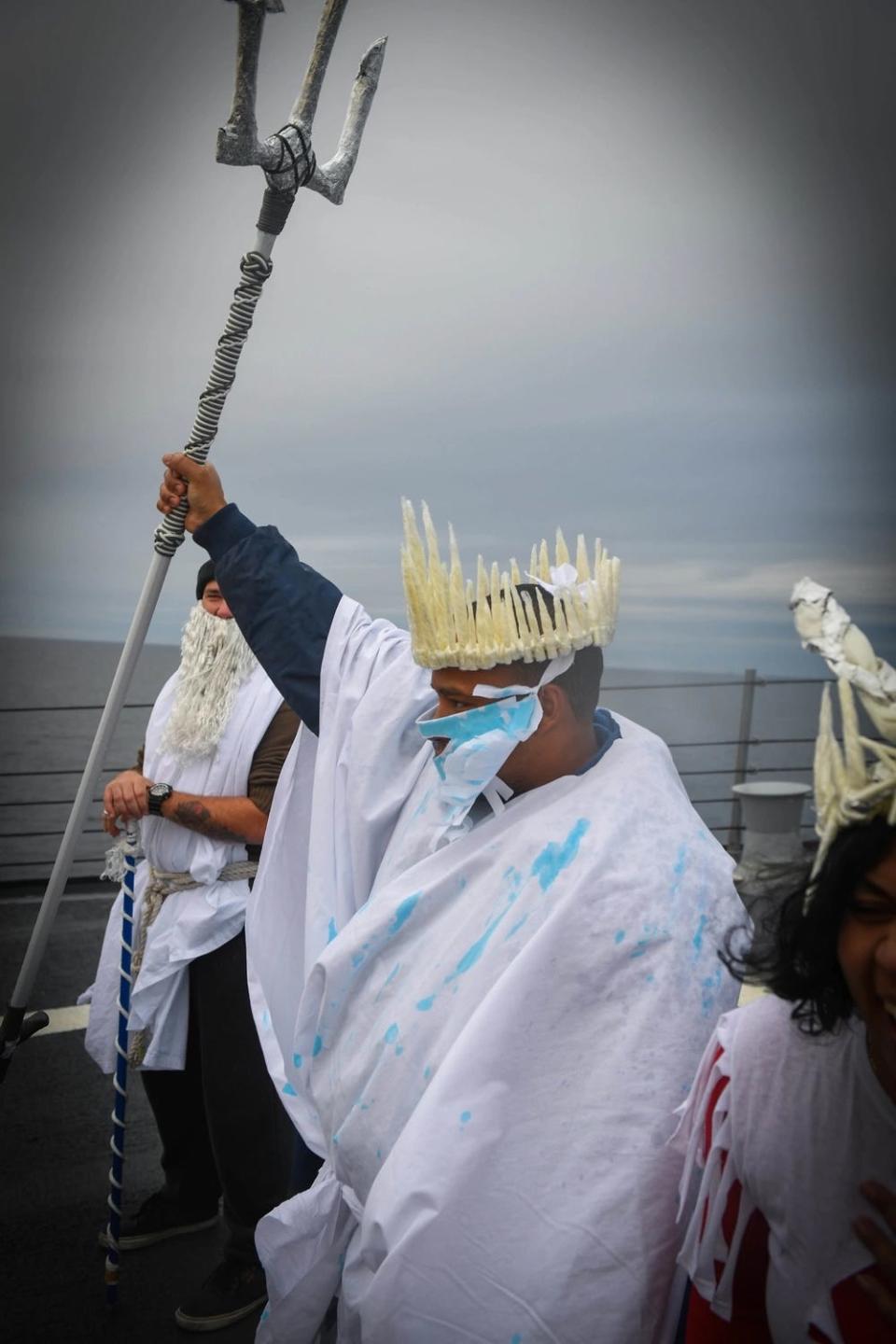
Because there is no formalized ceremony or certificate, the actual Blue Nose ceremony can vary from ship to ship. However, there are some commonalities among them.
All ceremonies include a visit from Boreas Rex, the King of the North whose domain the sailors enter upon crossing the Arctic Circle. To be accepted into his realm, sailors must go through a series of challenges designed by captains and crews.
Naval ceremonies around the world
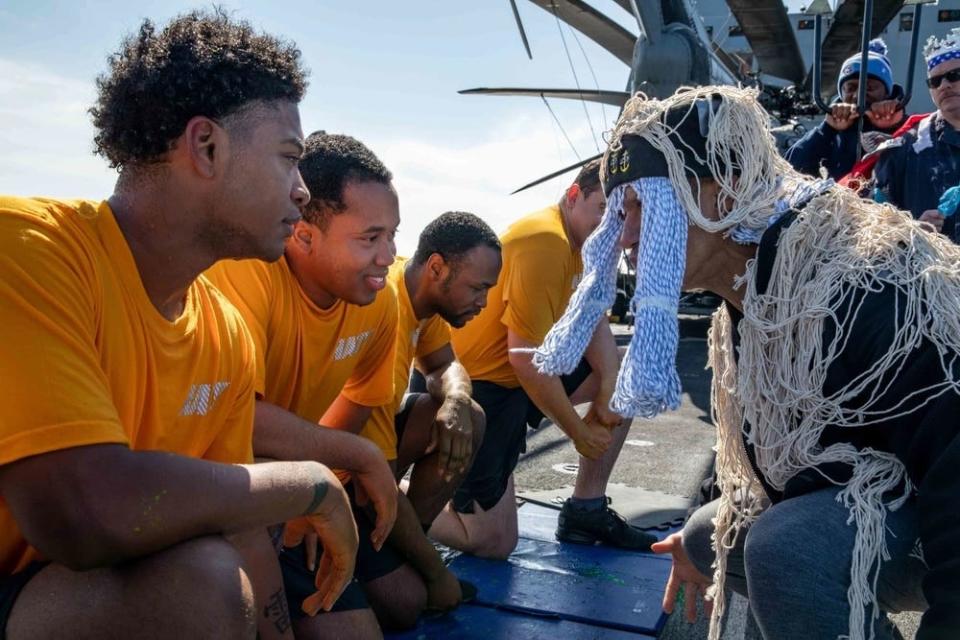
The tradition to mark the feat of crossing some of the harshest waters in the world has spread beyond the US Navy.
The crew of Canadian tanker, Nikolay Yevgenov, did their homework on crossing traditions online and discovered the Blue Nose ceremony. In an effort to boost morale and reward the crew for their hard work during their perilous journey, Captain Denis O'Donnell put together his spin on the Blue Nose Ceremony for his crew.
"The ceremonies differ ship to ship depending on time trade and willingness of the people onboard to take part. However, the ceremonies may differ, and the feeling is shared upon completion," O'Donnell wrote in a blog post of the experience. "These rituals help to form a common bond on board through the good times and especially the tough times."
The potential rise of Blue Nose members
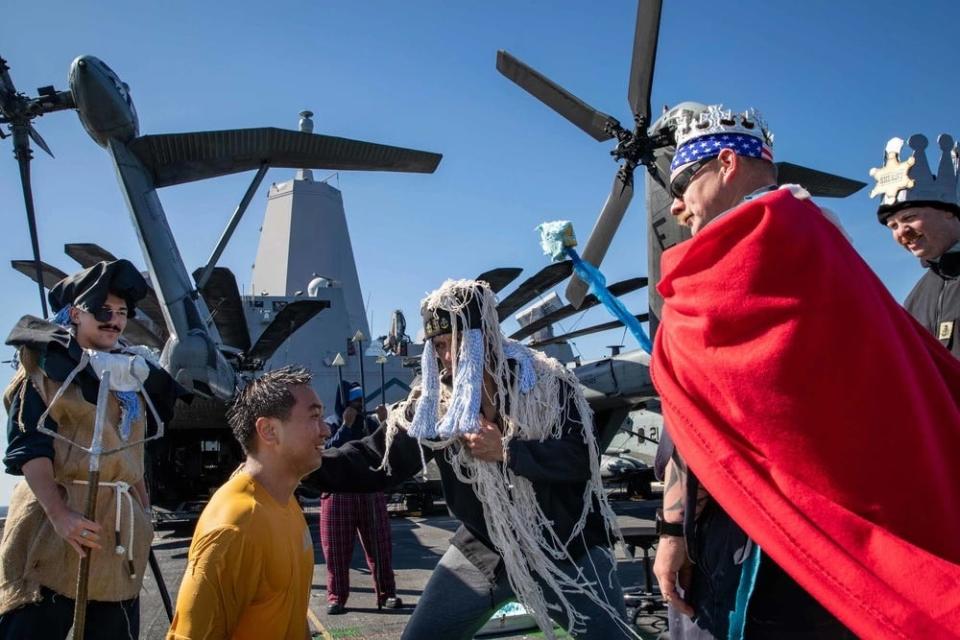
Though US Navy submarines frequently visit the Arctic, larger naval ships have been absent for roughly the past 20 years. The Navy only started again sending ships to the Arctic within the last five to six years.
https://www.businessinsider.com/russia-nato-increasing-military-activity-in-the-arctic-2020-7)
The climate crisis is opening up new passageways in the Arctic, creating more opportunities for competition among countries like the US, Russia, and China. Increased assertiveness by some US rivals is leading the US military to look more closely at the region.
The Blue Nose ceremony might become much more common than it has been in the past 20 years while the US Navy keeps an eye on escalating tensions in the Arctic.
Read the original article on Business Insider

